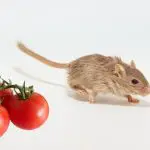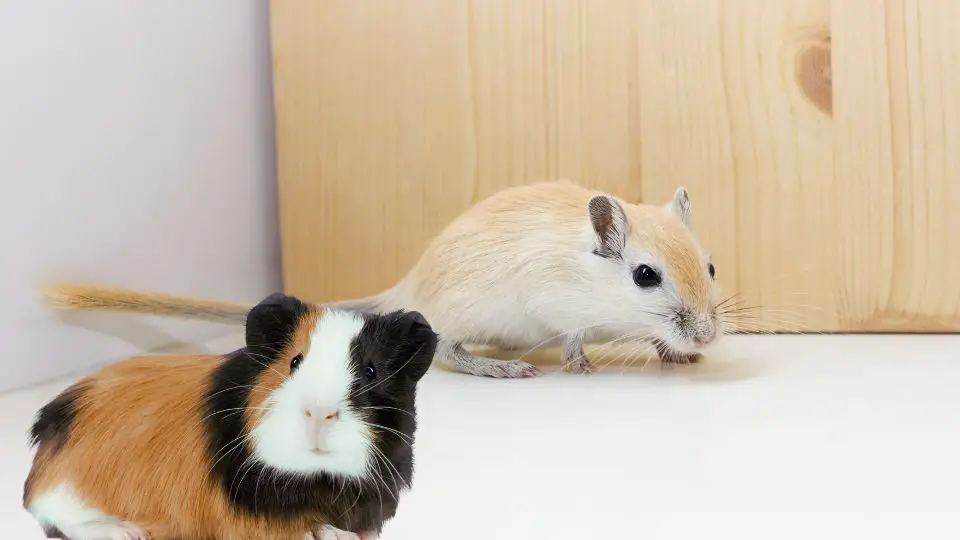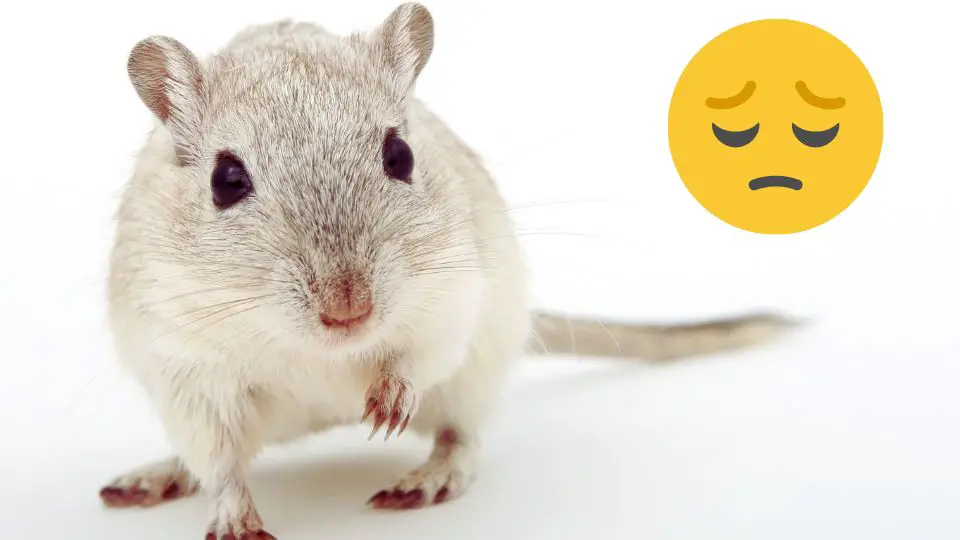Many gerbil owners wonder if it’s safe to let their furry friends venture outside. Gerbils are fascinating creatures with a natural instinct to explore, but their well-being should always be a top priority.
It is not recommended to let gerbils go outside. It is safer and more suitable for gerbils to be kept indoors in a controlled and secure environment. The outdoor environment poses risks such as escape, predators, extreme temperatures, and exposure to harmful substances. Keeping gerbils indoors ensures their safety and well-being.
In this article, we will explore the topic of gerbils going outside, examining the potential risks and benefits to help you make an informed decision.
Understanding Gerbil Habitat and Behavior
Gerbils are native to arid regions, such as deserts and grasslands, in various parts of the world. In the wild, they inhabit complex burrow systems that provide protection, shelter, and a sense of security. These burrows serve as their homes, where they rest, breed, and store food.
The burrowing instincts of gerbils are deeply ingrained. They have a natural inclination to dig and create intricate tunnel systems underground. This behavior allows them to escape predators, regulate their body temperature, and find food sources. In captivity, gerbils should be provided with an environment that mimics their natural habitat, including opportunities for burrowing and tunneling.
One of the key reasons gerbils should not be exposed to the outside environment is the risk it poses to their safety and well-being. The outside world presents numerous dangers, such as predators like birds of prey, cats, and other wildlife. Gerbils may not have the same ability to escape or defend themselves in an outdoor setting. Additionally, extreme temperatures, exposure to harsh weather conditions, and the presence of harmful substances or chemicals pose significant risks to gerbil health.
Furthermore, the outside environment introduces the potential for gerbils to encounter diseases, parasites, and pathogens that can harm their health. These risks are particularly pronounced when gerbils are exposed to wild rodents or contaminated soil.
To ensure the safety and well-being of gerbils, we recommend providing them with a secure and controlled indoor habitat.
Will Gerbils Run Away If Let Outside?
Yes, if gerbils are let outside, there is a high chance that they will run away. Gerbils are fast and agile creatures with strong instincts for burrowing and exploring. Their natural curiosity and instinctual drive to escape confinement can lead them to dig their way out of enclosures or squeeze through small openings. Once they are outside, it can be extremely challenging to locate and retrieve them.
Therefore, we don’t recommend letting gerbils roam freely outside as they may run away and put themselves at risk of getting lost or encountering dangerous situations. It is best to provide a secure and controlled indoor environment to ensure the safety and well-being of your gerbil.
Risks and Dangers of Outdoor Exposure
Gerbils, while naturally curious and adventurous, face various risks and dangers when exposed to the outside environment.
Risk of escape or loss
One significant risk associated with taking gerbils outside is the possibility of escape or loss. Gerbils are small and agile creatures known for their digging and burrowing abilities. Once outside, they can quickly dig their way out of enclosures or escape through small openings. Losing a gerbil outside poses a significant challenge in locating and retrieving them, putting their safety and survival at risk.
Presence of predators
Predators are another concern when exposing gerbils to the outside world. Birds of prey, such as hawks and owls, are natural hunters and may see gerbils as potential prey. Cats and other wildlife may also view gerbils as a source of food. Gerbils are not equipped to defend themselves against such predators, making them vulnerable to attacks and injuries.
Impact of extreme temperatures
Extreme temperatures can have a detrimental effect on gerbils. They are adapted to arid habitats and have a limited tolerance for temperature extremes. Exposure to excessively high or low temperatures can lead to heatstroke, hypothermia, and even death. It is crucial to provide a controlled indoor environment that maintains a stable and comfortable temperature for gerbils.
Exposure to harmful substances
The outside environment often contains harmful substances that can be toxic to gerbils. Pesticides, herbicides, and other chemicals used in gardens or outdoor areas can be ingested by gerbils when they explore or forage. These substances can cause severe health issues or even be fatal to gerbils.
Moreover, gerbils are susceptible to diseases and parasites commonly found in outdoor environments. Wild rodents, such as mice or rats, may carry diseases that can be transmitted to gerbils. Gerbils can also be exposed to parasites, such as fleas or ticks, which can infest their fur and cause discomfort or illness.
How to Let a Gerbil Play Outside
If you want to let your gerbil enjoy some supervised outdoor playtime, it’s important to do so in a safe and controlled manner. Here’s a step-by-step guide on how to let a gerbil play outside:
- Choose a secure and enclosed space: Select an area outside where your gerbil can play safely without the risk of escape or exposure to predators. This could be a small fenced yard, an enclosed garden, or a secure playpen specifically designed for small animals.
- Ensure a predator-free environment: Make sure the outdoor space is free from potential predators, such as cats, birds of prey, or other wildlife. Even if your gerbil is under supervision, it’s important to eliminate any possible risks.
- Provide shade and shelter: Set up a shaded area or provide an umbrella to protect your gerbil from direct sunlight. Gerbils are sensitive to heat, so it’s essential to prevent overheating and sunburn.
- Prepare a suitable play area: Create a safe and engaging environment for your gerbil by providing toys, tunnels, and hideouts. Place some gerbil-safe objects for exploration and enrichment.
- Always supervise: Never leave your gerbil unattended during outdoor playtime. Keep a close eye on them to ensure their safety and intervene if necessary.
- Time the play sessions: Limit outdoor playtime to short intervals, usually around 15 to 30 minutes. This helps prevent overexertion and ensures your gerbil doesn’t get too stressed or tired.
- Use a secure play carrier: If you want to take your gerbil to a different location, use a secure play carrier specifically designed for small animals. This will keep your gerbil safe during transportation and prevent escape.
- Watch for signs of stress or discomfort: Observe your gerbil’s behavior during outdoor playtime. If they appear anxious, try to reassure them and consider ending the session if they seem distressed or agitated.
- Practice proper hygiene: After your gerbil’s outdoor playtime, make sure to clean their paws and fur to remove any dirt or potential contaminants they might have encountered.
Creating an Enriching Indoor Environment
Gerbils are active and curious creatures that require a stimulating and enriching living space to thrive. While outdoor playtime can be limited and supervised, providing a well-designed indoor habitat is crucial for their overall health and well-being. Here are some of our key considerations and ideas for creating an enriching indoor environment for your gerbil:
- Spacious cage or habitat: Ensure that your gerbil has enough room to explore, play, and exercise. Opt for a spacious cage or habitat that meets the minimum size requirements recommended for gerbils.
- Tunnels and burrowing materials: Gerbils have a natural instinct to dig and burrow. Provide them with tunnels and tubes made from safe materials, such as PVC or cardboard. These allow them to engage in their natural behaviors and create their own little burrows.
- Climbing structures and platforms: Gerbils enjoy climbing and exploring elevated spaces. Incorporate climbing structures, such as wooden platforms or ladders, to provide vertical stimulation and exercise opportunities.
- Chew toys and gnawing materials: Gerbils have continuously growing teeth, and they need appropriate items to chew on to maintain dental health. Offer a variety of chew toys and gnawing materials, such as wooden blocks or mineral chews, to keep their teeth in good condition.
- Hideouts and nesting materials: Gerbils appreciate having cozy hideouts where they can retreat and feel secure. Provide them with small, enclosed spaces such as igloos or nest boxes. Additionally, offer soft nesting materials, such as shredded paper or tissue, for them to create comfortable sleeping areas.
- Exercise wheel: A solid-surface exercise wheel is a must-have for gerbils. It allows them to engage in important physical activity and helps prevent boredom and obesity. Ensure the wheel is an appropriate size and does not have any gaps or spaces that could cause injury.
- Environmental variety: Regularly rotate toys and rearrange the layout of the habitat to provide novelty and mental stimulation for your gerbil. Introduce new toys, tunnels, or objects for exploration to keep their environment interesting.
- Safe and non-toxic materials: Always choose items and materials that are safe for gerbils. Avoid plastic with sharp edges or small parts that can be chewed off and ingested. Opt for natural and non-toxic materials to ensure the well-being of your gerbil.
By creating an enriching indoor environment, you are providing your gerbil with opportunities for physical exercise, mental stimulation, and natural behaviors. This promotes their overall health, reduces stress, and helps prevent behavioral issues that may arise from boredom or lack of stimulation.
FAQ
What to Do If a Gerbil Goes Missing?
If your gerbil goes missing, it’s important to act quickly. Check all possible hiding spots in their habitat, such as tunnels, tubes, and hideouts. Secure any openings or gaps in the enclosure to prevent further escape. Create a safe and quiet environment to encourage your gerbil to come out of hiding.
Place familiar bedding or their favorite treats near their habitat to attract them back. You can also set up humane traps with food to capture your gerbil safely. If your gerbil is still missing after thorough search and efforts, consider reaching out to local animal shelters or posting about the lost gerbil in relevant community groups.
How often should you hold your gerbil?
Gerbils are generally sociable and enjoy human interaction, but they also need their rest and downtime. It’s recommended to handle your gerbil for short periods, preferably once or twice a day, to prevent them from becoming overwhelmed or stressed. Start with brief handling sessions and gradually increase the duration as your gerbil becomes more comfortable with you.
Observe your gerbil’s body language for signs of stress or discomfort, and if they show any signs of distress, gently place them back in their habitat and try again later.
Do gerbils like to be left alone?
While gerbils are social animals that live in groups in the wild, they also appreciate some alone time. It’s important to strike a balance between social interaction and allowing them to have their privacy. Gerbils may retreat to their hideouts or burrows for rest and relaxation, especially during daylight hours when they are less active.
Respect their need for solitude and provide them with a quiet and undisturbed environment when they choose to be alone. However, it’s crucial to monitor their behavior and ensure they are still engaging in their regular activities and showing signs of good health.
Do gerbils escape easily?
Gerbils are known for their curiosity and agility, and they can be skilled escape artists if given the opportunity. They have a natural instinct to burrow and dig, so it’s important to have a secure and escape-proof enclosure for them. Ensure the habitat has no gaps or openings that a gerbil can squeeze through.
Choose a cage or tank with solid sides to prevent them from chewing through or climbing out. Regularly check the habitat for any signs of wear or damage that could compromise its security. By providing a well-maintained and secure environment, you can minimize the risk of escape and keep your gerbil safe.
Conclusion
While gerbils have a natural curiosity and desire for exploration, it’s generally best to keep them indoors in a controlled and secure environment. The risks associated with outdoor exposure, such as escape, predators, extreme temperatures, and exposure to harmful substances, outweigh the potential benefits.
By providing a stimulating and enriching indoor habitat, you can ensure the well-being and safety of your gerbils while still offering them a fulfilling and exciting life. Remember, their happiness and health are best maintained in an environment where you have control over their surroundings.







